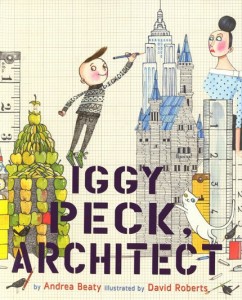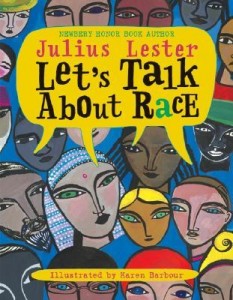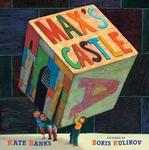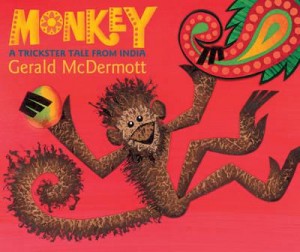Iggy Peck, Architect
 Long have I loved Andrea Beaty’s picture book series about a bear named Ted (grab Doctor Ted, Firefighter Ted, and Artist Ted from your local library and prepare to be charmed.) Then, I saw sitting on the shelf by the Ted books this gem, just waiting to tie in perfectly with science, math, and phonological awareness lessons.
Long have I loved Andrea Beaty’s picture book series about a bear named Ted (grab Doctor Ted, Firefighter Ted, and Artist Ted from your local library and prepare to be charmed.) Then, I saw sitting on the shelf by the Ted books this gem, just waiting to tie in perfectly with science, math, and phonological awareness lessons.
Iggy Peck, Architect written by Andrea Beaty and illustrated by David Roberts will grab young readers on page 1:
“Young Iggy Peck is an architect
and has been since he was two,
when he built a great tower – in only an hour –
with nothing but diapers and glue.”
The story about a young boy who loves to build and saves the day with his architectural skills is told in fantastic rhyme. (Hello, Common Core Standard of Phonological Awareness!) But the beauty of this book is that after you’ve used it in reading lesson, it inspires all kinds of science, art, and math extensions.
When his class is stranded on a small island, Iggy teaches his classmates how to construct a suspension bridge from “boots, tree roots and strings, fruit roll-ups and things”. After sharing Iggy Peck, Architect, pull out Bridges by Seymour Simon to learn more about suspension bridges and how they work (and pat yourself on the back for Integrating Knowledge and Ideas, you Core Standard wizard.) You may choose to forgo tree roots and boots, but challenge your students to plan and construct a suspension bridge, perhaps between two tables, with materials like string, paper, straws, etc. Students can use graph paper like David Roberts did when they draw up their plans, measuring actual distances and then scaling the distances down on paper before they build. Your students will be measuring, counting, drawing, predicting, and revising as they work. Keep architecture books like Bridges! Amazing Structures to Design, Build, and Test by Carol A. Johmann and Elizabeth J. Rieth, or the wonderful David Macaulay books on hand for those inspired by Iggy Peck. As Miss Lila Greer, the teacher in Iggy Peck, Architect realizes:
“There are worse things to do when you’re in grade two
than to spend your time building a dream.”
For more information about the author, go to andreabeaty.com.
For more information about the illustrator, go to davidrobertsillustration.com.
Read MoreLet’s Talk About Race
 “It is time for parents to teach young people early on that in diversity there is beauty and there is strength.” – Maya Angelou.
“It is time for parents to teach young people early on that in diversity there is beauty and there is strength.” – Maya Angelou.
Next Monday we celebrate the birthday of the Reverend Dr. Martin Luther King, Jr. What better way to honor his dream of a nation where our children “will not be judged by the color of their skin but by the content of their character” than with a wonderful children’s book celebrating our differences and our similarities.
Let’s Talk About Race is written by Julius Lester and illustrated by Karen Barbour. “I am a story,” Lester writes. “So are you. So is everyone.” Our race is just one part of our stories. “To know my story, you have to put together everything I am.”
How does your story begin? When were you born, and who is in your family? What is your favorite food, your religion, your favorite color, your nationality? All of these things are a part of our stories. But, “some stories are true. Some are not. Those who say ‘MY RACE IS BETTER THAN YOUR RACE’ are telling a story that is not true.”
Lester goes on to tell a story that is true: if you press your fingers gently below your eyes, you can feel the bone beneath your skin. And if you press gently on a friend’s face, no matter what their skin color, you will feel the bone there, too. “Beneath our skin I look like you and you look like me…” Instead of focusing on the stories we can make up about each other based on eye color, skin color, and hair texture, we can find out the true stories, the rich and complex stories, of each other.
After you read Let’s Talk About Race with your students, talk about race! And talk about all the other wonderful parts of our stories, from favorite foods to hair color to pet peeves. You can make a questionnaire based on all the elements Lester talks about for students to answer. Next, challenge students to find someone else who had the something the same on his or her list. You can integrate this into a math lesson by graphing some of the answers, like eye color, or get out the art supplies and let students make cool representations of themselves. If your students can “identify the main purpose of a text, including what the author wants to answer, explain, or describe”, you’ll hit the Common Core State Standard of Craft and Structure using a book with a truly worthwhile main purpose.
Read MoreMonkey: a trickster tale from India
It’s January, and is it just me, or are your kids more wiggly than a troop of monkeys, too? Here’s a book to get your kids monkeying around in a good way, and you’ll be teaching the Common Core State Standard of Key Ideas and Details.
Monkey: a trickster tale from India by Gerald McDermott is a beautifully illustrated Indian folk tale. (Reading folktales from different cultures is part of the Key Ideas and Details Standard for Reading Literature.) Monkey wants to get to the island in the middle of the river to eat the mangoes. Crocodile lives in the river and he wants to eat Monkey’s heart. How does Monkey get to the island without being eaten?
Before reading this book, ask your students how you might get across a river where a hungry crocodile lives. Compare, as you read, their suggestions to what Monkey does in the story. Then, teach your “monkeys” cooperative learning and problem-solving skills: give teams of students the same objects like a rope, a scooter, a beach towel, etc., and challenge them to get their entire team across the river (the playground or the gym) without touching the ground or the “water” where the crocodile could get you! To alleviate frustration and encourage learning from errors, if anyone does touch the ground, let the team start over, and brainstorm how to avoid that problem in the next go.
When you return to the classroom, encourage students to experiment with painting paper and cutting it to make cool collages, much like McDermott did for this book. An art activity, cooperative learning that gets kids moving, and a beautiful book – it’s more fun than a barrel of, well, you know!
For more about this Caldecott-winning author/illustrator, please visit geraldmcdermott.com.
Read MoreMax’s Castle
 Let me make it easier for you this holiday season, because I know how it is. You want to buy a book for a child for the holidays, but you think they’d probably like a toy better, but you don’t want to give plastic junk, and yet do kids even like educational toys? Do you give the kid an abacus and watch that smile dissolve, or do you give in and buy a lead-coated choking hazard that promotes violence and unhealthy body images?
Let me make it easier for you this holiday season, because I know how it is. You want to buy a book for a child for the holidays, but you think they’d probably like a toy better, but you don’t want to give plastic junk, and yet do kids even like educational toys? Do you give the kid an abacus and watch that smile dissolve, or do you give in and buy a lead-coated choking hazard that promotes violence and unhealthy body images?
Get Max’s Castle written by Kate Banks and illustrated by Boris Kulikov along with wooden letter blocks, a game of Scrabble, or Bananagrams and everyone’s happy! If you have an iPad, tech it up for free by downloading the free Magnetic Letters app to play along while you read!
Max’s Castle is full of imagination and creative problem-solving, along with letter recognition and spelling. I love the way Banks and Kulikov show that switching a few letters changes words. Max and his brothers use alphabet blocks to build a castle. Kulikov does a fantastic job with letter arrangement: Max is in the MOAT hanging onto a block that is angled with an M and a B when Benjamin says they need a BOAT. The boys use the letter blocks to solve problems, like when the ADDER that is literally “in” the DARK DUNGEON (Banks capitalizes the words the boys have built with blocks) is causing problems, the boys take the L from the BUGLE to make the ADDER a LADDER.
Once you share Max’s Castle with that lucky kid or with your lucky students, give the kids letter blocks or Scrabble tiles or the iPad with the Magnetic Letters app to play with and rearrange! You can let students explore independently, or give challenges, like “Here comes a SNAKE ready to attack – what could you make to solve the problem?” Kids can switch out letters to make a RAKE to shoo away the snake, or TAKE it to the woods, or give it a SNACK to eat instead of eating you, etc. Encourage students to see if they can make the word look a bit like the object it represents, like Kulikov did, or use the blocks or tiles to build a structure like Max and his brothers did. Kids will build upon the Common Core State Standards of Print Concepts, Phonological Awareness, and Phonics and Word Recognition while they build fine motor skills. You’ll be the hero of the holidays!
Read More







